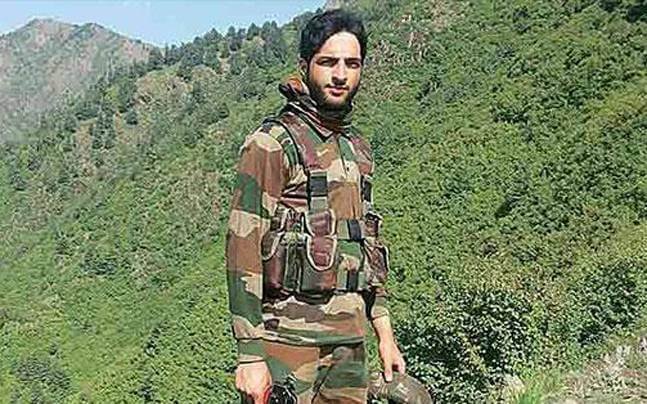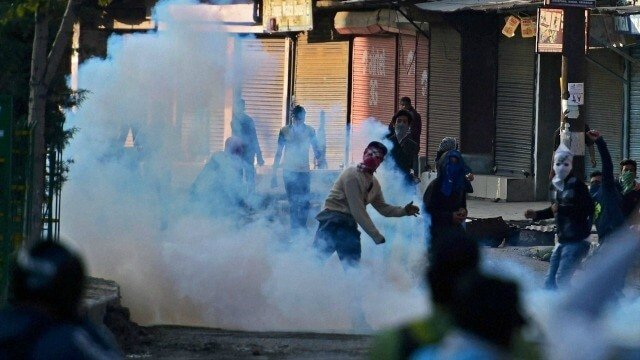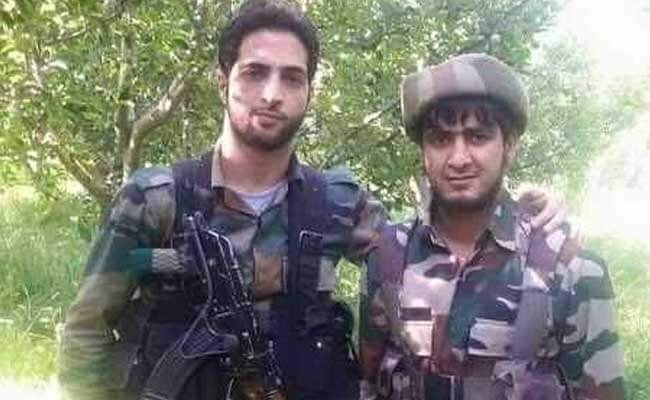Kashmir has again erupted. This time the trigger is not the death of a civilian, but of a militant commander who was one of the most wanted men in Kashmir. There were a dozen FIRs registered against him. For the police, he was a “terrorist” but for those nearly two lakh mourners who turned up at his namaz-e-janaza, he was someone who bid farewell to his cricket fascination and prospects of a good education to stand against the injustice he believed the Kashmiri people have been reeling under.
It is important to understand the history of Kashmir militancy to grasp why Burhan Wani is considered a hero amongst Kashmiri youth. And why, peace in Kashmir is so fragile and momentary.

The fissures started appearing in 2008, when the then-state government allotted a large chunk of forest land to the Amarnath Shrine Board that manages the annual Amarnath pilgrimage to the Holy Cave. Kashmiris felt insecure that something that belonged to them was being taken away, given the insecurity that has manifested itself in them over the last few decades.
Kashmir returned to a new mode of agitation to register its anger against the Indian state for this decision. Resulting not only in scores of deaths, but in also dividing the two regions of Kashmir and Jammu on communal lines.
In 2010, Kashmir again witnessed political unrest. Parallels were drawn with the Arab Spring and the Intifada as young boys took the police and paramilitary forces head on, pelting them with the weapons at their disposal – stones. In the cycle of violence that continued for many months, 130 people, mostly young boys, were killed.

In 2014, when assembly elections were held, the majority of voted and elected a government that created from a new and unexpected combination — PDP and BJP. But that again did not change much on the ground.
Not only have people failed to reconcile with any political arrangement with Delhi, but the people’s open support to militants is presenting a disturbing picture on-ground. Kashmir has kept simmering, and even the smallest incident can cause an eruption. Increasing political disempowerment and the continued denial of political alienation has contributed further to the sense of despondency over the years.
The changing complexion of militancy in Kashmir could be seen in 2010. Earlier, it used to be dominated by foreigners, with lower representation of Kashmiris. This has reversed in the last few years.
This change in the identity of the militant Kashmiri can be traced back to the hanging of Afzal Guru. It was seen as a clear message to Kashmiris from New Delhi, that the Central government would do what it wanted without regard to the domino effect this could have in Kashmir.
This feeling of being irrelevant to the greater scheme of India, is what led to a new breed of militants being born. Coupled with the increasing intolerance in India and later the PDP joining hands with BJP, this new age militancy saw many educated youngsters joining the ranks.
You could see the changing demographic in the youngsters who were no longer afraid of attending the funerals of militants in the Valley. This gave way to a new phase of violence which has replaced the space usually taken by negotiations and political dialogue.
Notwithstanding the fact that police and security forces have killed a record number of militants — 80 in the past six months, the participation of locals in militancy is increasing. Between June 2015 and June 2016, according to official sources, 40 new boys had joined the ranks. It is out of this new militancy of the educated and disillusioned youth, that Burhan Wani was born.
Burhan was 15 when he joined the militant ranks to challenge India’s rule in Kashmir. His story of turning into a militant from a meritorious student has become legendary in Tral. It goes like this: he along with his elder brother Khalid was on a motorcycle ride when Special Operations Group (SOG) personnel of Jammu and Kashmir Police beat them up ruthlessly, without provocation.
This angered Burhan, who was in Class X at the time, to become a militant. His brother Khalid was killed by the Army last year while returning from meeting Burhan in a nearby jungle.

Burhan’s story unfolded as a movie script as he not only changed the fabric of militancy but also gave it a new colour, which is seen as more “legitimate” in the sense of it being indigenous. He shunned aliases and was open about his identity, sharing not just his name but also his visage.
This was a move totally different from the early 90s when armed rebellion broke out in Kashmir and while thousands of Kashmiri youth picked up the gun, they always hid their faces behind masks. Burhan Wani also used social media to send his messages. The video messages went viral and he soon became an iconic figure for new age militancy in Kashmir. Police officers I have spoken with, admit that Burhan infused a new life to Kashmiri militancy by attracting young local boys to emulate him.
It is the continuous denial of reality on the ground has led to more alienation. A political analyst who did not want to be named has said, “Absence of political engagement to resolve the Kashmir dispute is setting a new political discourse, and militancy is gaining legitimacy among populace to counter New Delhi’s denial of the political reality”.
Today Kashmir is writhing in pain. With 32 deaths in four days and 1500 people including 200 police and paramilitary men injured, the road to recovery is a long one. A political approach is what is required to deal with today’s Kashmir. The current approach of speaking solely through security and law and order will only ensure that Kashmir erupts each time a militant is killed.
(Feature Image Source: Twitter)

















